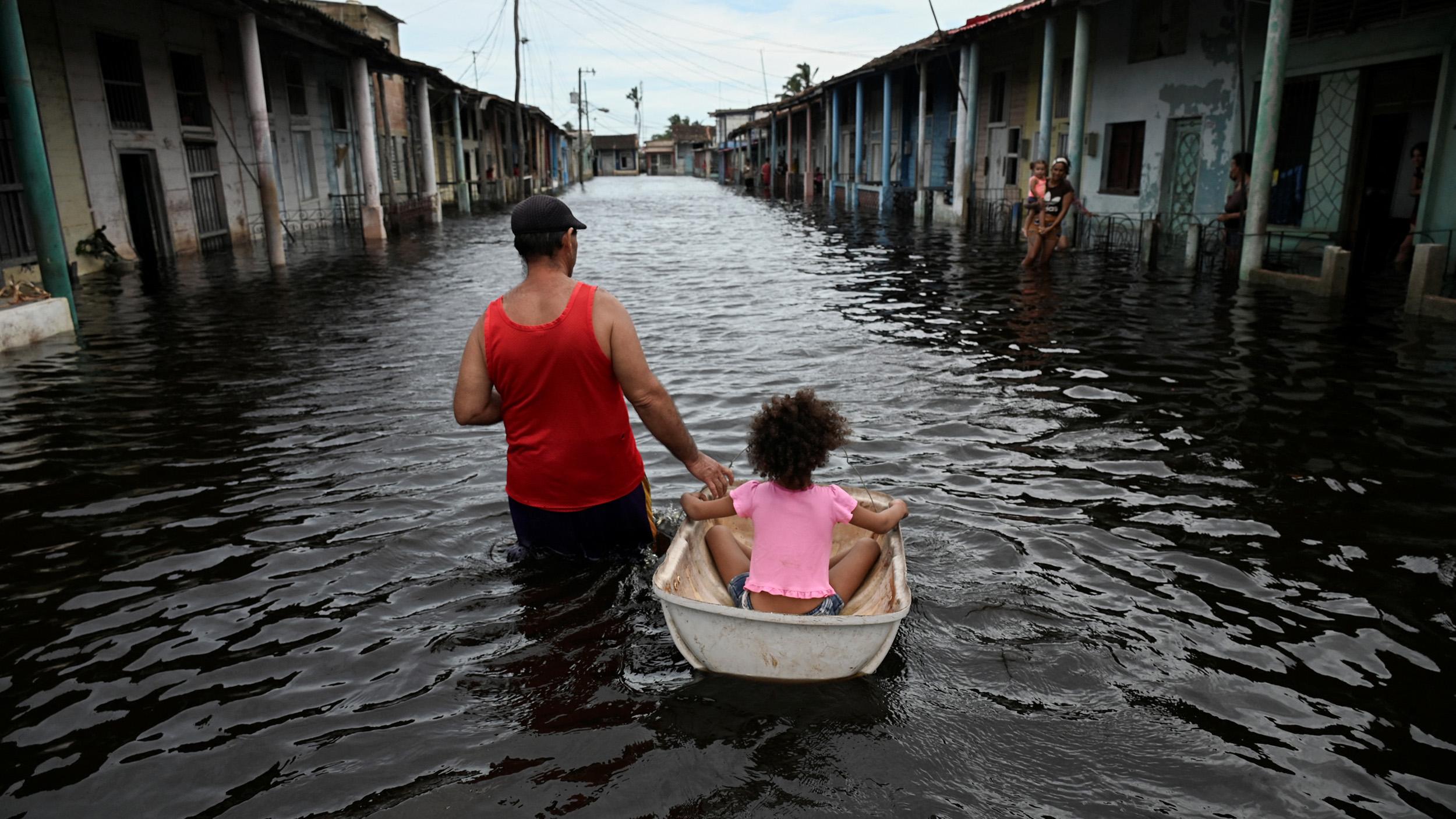Will The Next Refugee Crisis Be An Environmental Refugee Crisis?

We are currently witnessing the worst refugee crisis in decades, but it is estimated that the numbers now fleeing Syria may be dwarfed by those forced to flee their homes because of environmental catastrophes in the coming century. In an investigation at BBC Future, Michael Gerrard, director of the Sabin Center for Climate Change Law at Columbia Law School explains: “The numbers of people involved in the current crisis are one or two orders of magnitude [lower] than what would eventually be faced in a climate crisis.”
Particularly worrying for those at risk is the fact that there is still no international agreement on what will happen to environmental refugees. The term “environmental refugee” is actually currently a legal misnomer because the 1951 Refugee Convention allows “zero status under international law” to those fleeing environmental catastrophe, according to Jose Riera, a special advisor at the UN.
Ultimately, the answer to the question of how big the environmental refugee crisis could be over the coming years is impossible to accurately predict. If we assume that everyone currently living on land that is expected to be lost as sea levels rise will migrate, the number stands at 200 million people. Of course, not all of these people will leave their home country, but some may have no choice. It is already very likely that at the very least a number of Pacific islands home to hundreds of thousands of people will disappear forever.
In fact, according to some researchers, we may be asking entirely the wrong question. Perhaps the question is not “when will the environmental refugee crisis happen?” but “has the environmental refugee crisis already begun?” If we attempt the decidedly unscientific task of unwinding the series of events that led to the current crisis in the Middle East, it is clear that climate change was likely a major factor.
It is already very likely that at the very least a number of Pacific islands home to hundreds of thousands of people will disappear forever.
That’s according to a paper published this year in the Proceedings of the National Academy of Sciences (PNAS), which points to the fact that between 2006 and 2010 Syria experienced the worst multi-year drought on record causing crop failures, mass migration to urban centres, and steep rises in food prices.
Of course the situation in Syria is far more complex than this, but it is more than possible that these events that the researchers attribute directly to climate change helped a bubbling pot to boil over. Syria certainly wouldn’t be the first country that might have been pushed to a crisis point by climate change. Eight years ago, the conflict in the Darfur region of Sudan was also blamed on drought caused by climate change, according to a UN report based on an 18-month study of Sudan by the UN Environmental Programme.
According to Colin Kelley the researcher behind the PNAS paper, Yemen is another Arab Spring country that is strongly reliant on rainfall and groundwater that has seen a steady decline in rainfall that cannot be explained by natural variability. If climate change continues unabated, Yemen could be next.
All of this is before we even begin to consider the potential effects of extreme heat in promoting social unrest in urban centres, a trend that has been widely observed. Now consider that already “Baghdad has eight extreme heat days a year. With 2C global warming they say there will be 90 extreme heat days. With 4C warming, over 115. It is a similar story for Amman, Damascus, Beirut, and Riyadh.”
It is of course true that correlation does not imply causation, but these correlations are correlations that we ignore at our peril.
Related Post: Why Do Most American Conservatives Still Refuse To Believe In Climate Change?
Follow Simon Oxenham on Twitter, Facebook, Google+, RSS, or join the mailing list to get each week’s post straight to your inbox. Image Credit: Spencer Platt/Getty.





